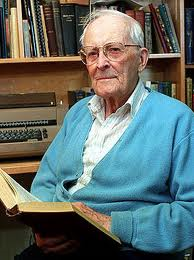The missing papyrus theory of The Book of Abraham
It is likely futile to assess Joseph’s ability to translate papyri when we now have only a fraction of the papyri he had in his possession. Eyewitnesses spoke of “a long roll” or multiple “rolls” of papyrus.[1]Hauglid, Textual History of the Book of Abraham, 213–14, 222. Since only fragments survive, it is likely that much of the papyri accessible to Joseph when he translated the book of Abraham is not among these fragments. The loss of a significant portion of the papyri means the relationship of the papyri to the published text cannot be settled conclusively by reference to the papyri.
At the 2007 FAIR apologetics conference, Egyptologist Dr. John Gee (PhD, Yale) presented new data on the scrolls from which Joseph Smith translated the Book of Abraham. This material has since been published in John Gee, “Some Puzzles from the Joseph Smith Papyri,” FARMS Review 20/1 (2008): 113–138.[2]Gee sums it up nicely: Since, for the most part, Latter-day Saints and Egyptologists agree that the preserved portions of the Joseph Smith Papyri do not contain the Book of Abraham, there is the … Continue reading
Dr. Gee demonstrated how a formula developed by Friedhelm Hoffmann can be used to determine the total length of a papyrus roll based upon measurements of the extant scroll, and from this formula, he has determined that the Joseph Smith Papyri (JSP) is missing at least 41 feet.
Could the works or record of Abraham be on some of this missing papyri?
Some of the papyri that Joseph Smith had in Kirtland were later burned in the Chicago fire and it’s possible that other fragments were lost or destroyed elsewhere. A Yale-trained Egyptologist, John Gee believes that Joseph Smith originally had five papyrus scrolls (one of which was the hypocephalus).[3]John Gee, “Research and Perspectives: Abraham in Ancient Egyptian Texts,” Ensign (July 1992), 60.; John Gee, “Abracadabra, Isaac and Jacob (Review of The Use of Egyptian Magical Papyri to … Continue reading Of these five scrolls, only eleven fragments of two scrolls have survived. The “Scroll of Hor” (the Egyptian Book of Breathings) from where we get Facsimile 1 (and almost certainly Facsimile 3—which didn’t survive) is incomplete.
Hugh Nibley writes:
We are told that papyri were in beautiful condition when Joseph Smith got them, and that one of them when unrolled on the floor extended through two rooms of the Mansion House.[4]Hugh W. Nibley, “Phase One,” Dialogue: A Journal of Mormon Thought 3 no. 2 (Summer 1968), 101.
Nothing like this has survived today. Gee estimates that the Scroll of Hor (likely the putative [supposed] source for the Book of Abraham) may have been ten feet long[5]John Gee, A Guide to the Joseph Smith Papyri (Provo, Utah: FARMS, 2000), 12–13. and that in all, Joseph may have had eight times as much papyri as what is currently extant![6]John Gee, “Facsimile 3,” lecture given at the FARMS Book of Abraham Conference (16 October 1999); see also, John Gee, “The Ancient Owners of the Joseph Smith Papyri” (Provo: FARMS, 1999), 1. A number of scholars contend that the reason that the extant papyrus fragments don’t have anything to do with the Book of Abraham is because we don’t have that portion of the papyrus that served as the text from whence Joseph translated the Book of Abraham. At the very least, the critics ought to be cautious if only 13% of the ancient scrolls are available for examination!
References
| ↑1 | Hauglid, Textual History of the Book of Abraham, 213–14, 222. |
|---|---|
| ↑2 | Gee sums it up nicely: Since, for the most part, Latter-day Saints and Egyptologists agree that the preserved portions of the Joseph Smith Papyri do not contain the Book of Abraham, there is the possibility of detente between the two because scholarship cannot tell what was or was not on the missing papyri. Egyptologists could stick to what is knowable from the remains, and Latter-day Saints could trust God about the origins of the Book of Abraham. Our trust (or faith) in God becomes, for those fortunate enough to possess it, “the basis of what we hope for, the evidence of things unseen” (Hebrews 11:1, my translation). Those who have it require no other proof. Those who have chosen not to trust God will not “be persuaded, though one rose from the dead” (Luke 16:31). If we had the papyrus from which the Book of Abraham was translated—and I testify that we do not—the critics would not believe it; and most of them could not read it anyway. See “Puzzles,” p. 136. |
| ↑3 | John Gee, “Research and Perspectives: Abraham in Ancient Egyptian Texts,” Ensign (July 1992), 60.; John Gee, “Abracadabra, Isaac and Jacob (Review of The Use of Egyptian Magical Papyri to Authenticate the Book of Abraham: A Critical Review by Edward H. Ashment),” FARMS Review of Books 7/1 (1995): 19–84. |
| ↑4 | Hugh W. Nibley, “Phase One,” Dialogue: A Journal of Mormon Thought 3 no. 2 (Summer 1968), 101. |
| ↑5 | John Gee, A Guide to the Joseph Smith Papyri (Provo, Utah: FARMS, 2000), 12–13. |
| ↑6 | John Gee, “Facsimile 3,” lecture given at the FARMS Book of Abraham Conference (16 October 1999); see also, John Gee, “The Ancient Owners of the Joseph Smith Papyri” (Provo: FARMS, 1999), 1. |



No Comments
Comments are closed.